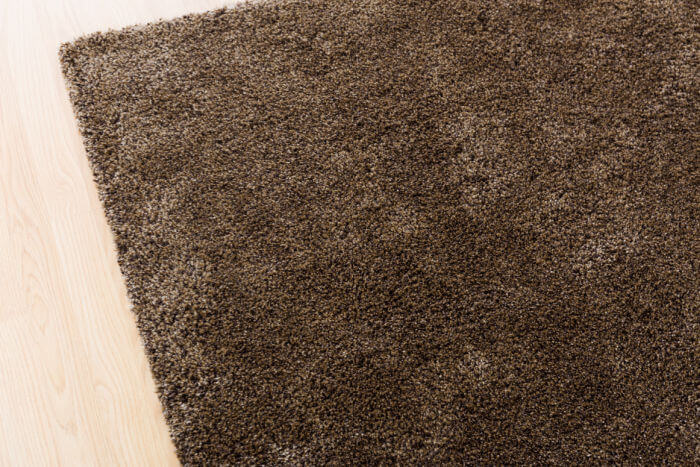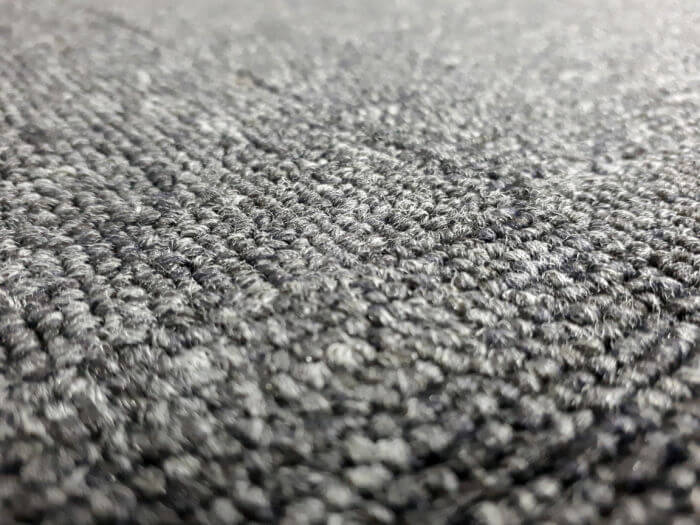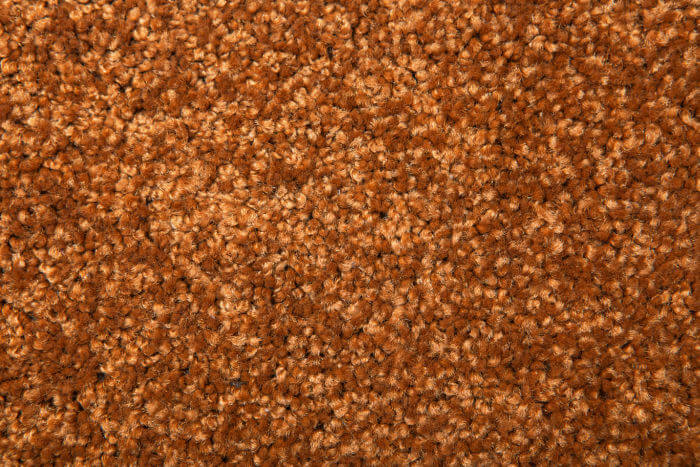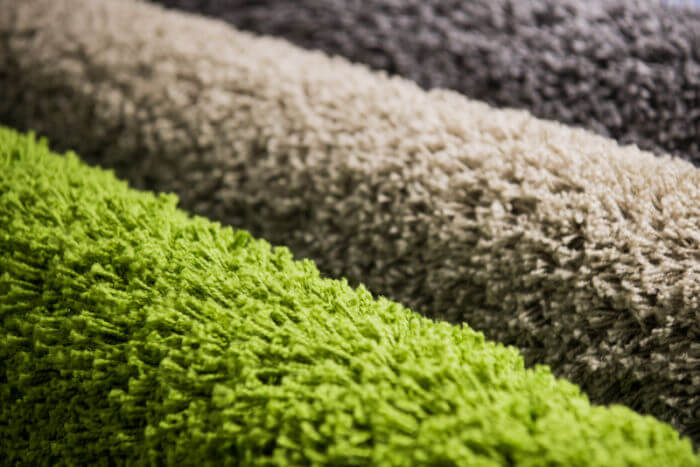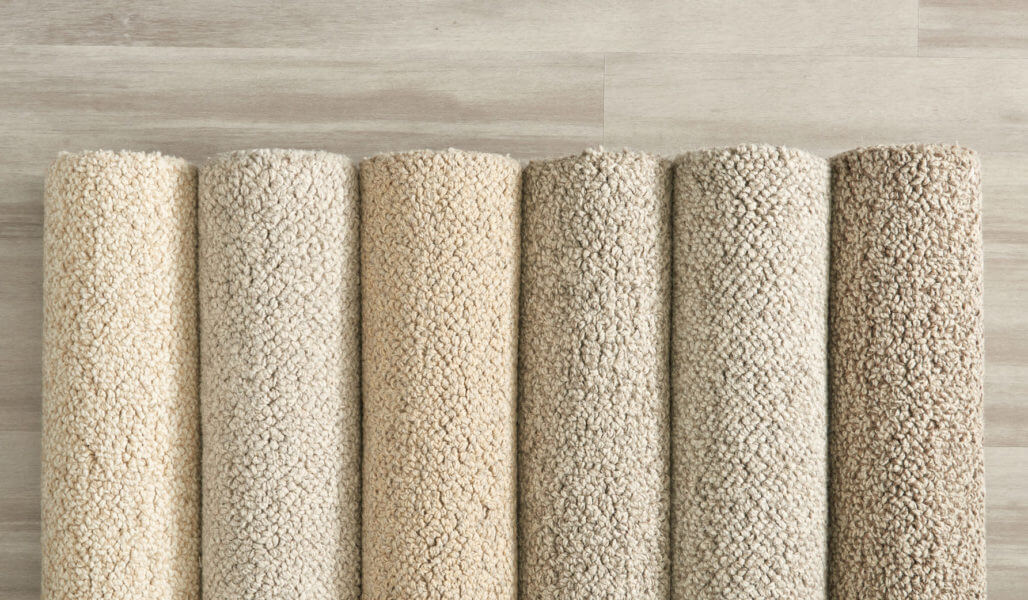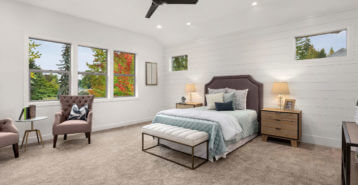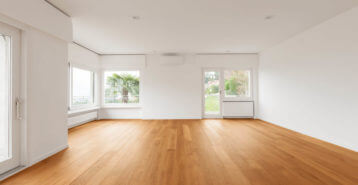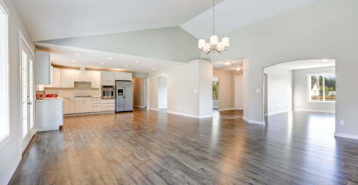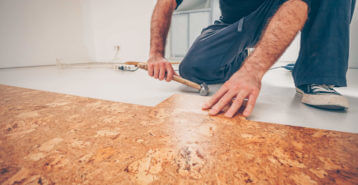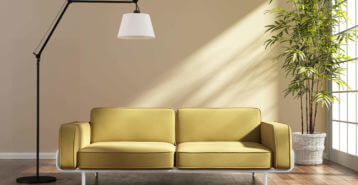Choosing the Best Type of Carpet for Your Home
Nothing beats carpet for comfort. Carpet provides unmatched warmth and thermal resistance, dampens noise and cushions the most-used living spaces throughout your home. Walking barefoot across a carpet that is just right for you is one of those comforting moments that we too often take for granted.
Because there are so many different types of carpet, choosing the right one for your home and budget is not always easy. Each type of carpet works best in different rooms and areas of the home. The right carpet can also ensure functionality and minimize cleaning and maintenance needs. Here’s what you need to know to choose the best carpet for your needs. We cover everything from carpet styles and textures, density, durability padding, cost, and more.
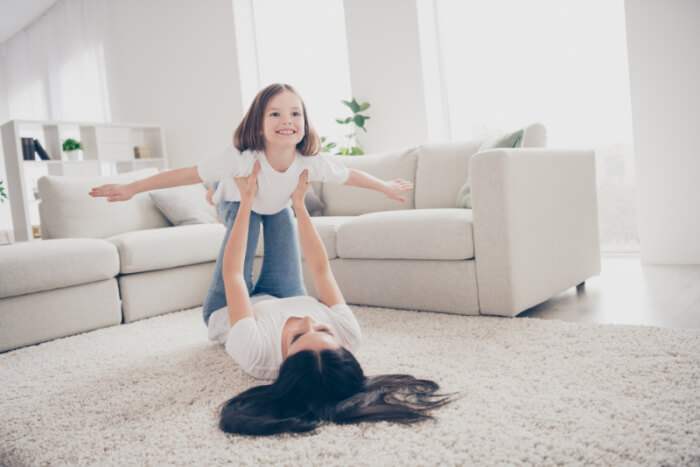
Best Types of Carpet Fibers
Touch any two samples of carpet and you might be surprised by how different they feel. Part of the difference lies in the fibers that make up the carpet.
There are two primary types of carpet fiber: natural and synthetic. Natural wool carpet fiber is made from the shorn hair of animals such as sheep, goat and alpaca. However, keep in mind that about 95 percent of today’s residential carpet fibers are synthetic.
The three most common types of synthetic carpet fiber materials used to make new carpet are nylon, polyester and olefin. Acrylic carpet fibers are also sometimes used in the home, as well as wool carpet fibers. Wool carpets can either be natural or synthetic, depending on your preferences.
Below we cover these popular types of carpet materials, their pros and cons, and which areas of the home each material works best.
Nylon Carpet
Nylon carpet has been a common flooring staple in homes since 1935. By far the most popular type of carpet fiber in homes today, nylon is very soft, resistant to wear, durable, and difficult to permanently stain.
Nylon carpet holds color well, so what you purchase today will likely look much the same in ten years. In fact, it’s not unusual for a good nylon carpet to last for up to 15 years with typical wear and tear in a family home. There are plenty of cut pile and loop pile nylon varieties to choose from, based on your preference of softness and density. Additionally, it is naturally crush, abrasion and mildew resistant, and it provides excellent resistance to oil- and grease-based stains.
Nylon carpet is affordably priced at approximately $5 to $8 per square foot. This is a lower price point than wool carpet, but a bit more expensive than some other synthetics. It is the best type of carpet for high-traffic areas, such as living rooms, since it is resistant to stains and wear-and-tear. Nylon is also a good carpet material for homes with pets.
Olefin Carpet
Olefin carpet, also known as polypropylene carpet, is made from petroleum products, making it less expensive to manufacture than nylon. It is not quite as soft as nylon, but still comfortable to walk on.
This type of carpet is great for basement and outdoor uses, such as patios, because it has exceptional resistance to mold and mildew. Olefin is most commonly found in loop pile carpet styles.
Olefin fibers are similar to natural wool, which is why it can often be used as a synthetic wool substitute. It is wear and tear resistant and also stain-resistant, but it does hold onto oil – and that collects dirt. However, the hardy nature means it can withstand harsh cleaning chemicals, perhaps even bleach. It costs a bit less than nylon carpet, at just $1 to $3.50 per square foot.
Polyester Carpet
Made of fade-resistant, vibrant colors, polyester is a man-made fiber that is usually hypoallergenic. There are also polyester varieties that are made of recycled plastic bottles and are also eco-friendly. Roughly one-quarter of synthetic carpet is made using polyester fibers. Polyester carpet is generally not as durable as nylon, and it is usually a bit lower on pricing. However, there are plenty of high-end polyester carpets that buck these trends.
Polyester is naturally hydrophobic, meaning it is great at repelling water, and polyester carpet fibers can be treated to make them more stain-resistant. According to the National Floor Covering Association, nylon carpet fiber provides the greatest wear resistance, followed by olefin and polyester.
Polyester is a very affordable type of carpet, at just $1 to $5 per square foot. It is often cheaper than both nylon and wool. However, polyester carpets can be easily flattened, which makes it best for low-traffic areas such as guest rooms. Unfortunately, polyester is also known to absorb oils and stains, so make sure to clean them routinely.
Acrylic Carpet
Acrylic carpet is usually harder to find than nylon or olefin carpets. It is often marketed as “synthetic wool” since it feels very much like wool but doesn’t carry the hefty price tag.
Acrylic is resistant to moisture, mildew, fading, staining, and even buildup of static electricity. But for all those good qualities, it’s not very durable, and so it shouldn’t be used in high-traffic areas, such as hallways. Instead, use acrylic carpets in low-traffic rooms, such as dining rooms or home offices, that few people frequent daily. You must be careful with maintaining and cleaning acrylic, as cleaning products can stain it. You can expect acrylic carpet to come in at an average price of $2.50 to $4 per square foot.
Wool Carpet
Wool is a delightfully soft natural fiber with a luxurious feel. This type of carpet comes in both natural and synthetic options. Some manufacturers will create wool blends, where the natural fibers are blended with synthetic ones to create a carpet with more stain resistance and longevity at a better price point.
An eco-friendly option, wool comes in various grades and costs between $5 and as much as $26 per square foot. Higher grade wool is on the more expensive end, while the lower grade synthetics are more likely to stain or hold onto dirt. Wool carpet is one of the most durable and long lasting options available, lasting 50 years or more when maintained properly.
Those with allergies will enjoy wool, as it is made with no chemicals or additives. However, keep wool in a place with little humidity and moisture, such as the bedroom, as it is prone to mildew. Do not use a wool carpet outdoors.
Different Carpet Styles
Now that you know what materials are most commonly used for carpet, you likely want to learn about different carpet styles. A carpet’s style has a lot to do with carpet pile – or the density and thickness of the carpet’s fibers – and how the carpet will feel to the touch. Some carpet styles are rougher and thicker, while others feel more light and soft on the feet.
There are two main types of carpet construction: Loop pile and cut pile. Let’s look at both options.
Loop Pile
Loop pile carpet fibers are bound in tight, compact loops to form a high-density, long-wearing surface. The loops can be multi-level, which provides unique texture and appearance.
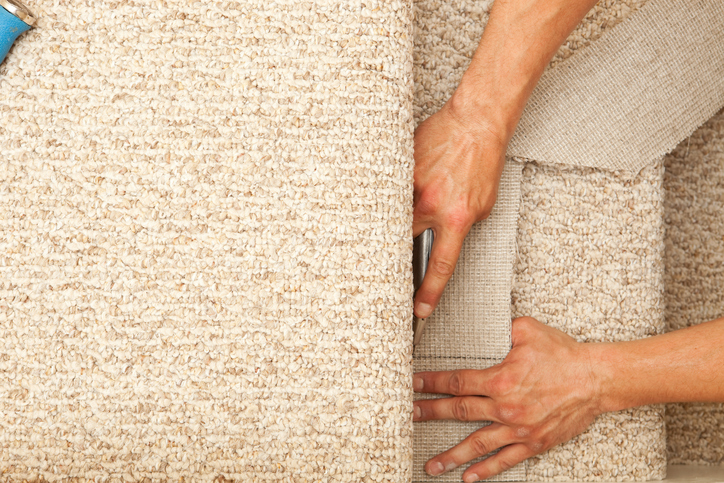
Loop pile carpet is known for its low profile, top-notch durability, and stain resistance. At the same time, loop pile will have little cushioning.
Types of Loop Pile
Here are a few varieties of loop pile to consider:
- Level loop, also known as Berber carpet, is quite popular. This carpet leaves the entire loop intact on the surface, which is why it’s sometimes known as “uncut pile.” Level loop pile is designed to withstand high-traffic areas of the home.
- Patterned loop, also known as multi-level loop, is made of loops of varying height. This gives the carpet a patterned look and texture. As an added bonus, this type of carpet rarely shows footprints or vacuum marks.
- Cut and loop carpet, sometimes called sculpted carpet, is a blend of level and patterned loop pile. Some fibers are looped and some are cut. This can offer visual interest, as well as protection against footprint and vacuum marks.
- Sisal carpet is a loop style in which loops of varying different colors and heights are arranged in rows. This produces a patterned surface with a unique texture.
Cut Pile
Cut pile starts like a loop pile, but then the tips are cut so there are no loops. This makes the cut pile carpets denser and softer than loop pile.

In this manufacturing process, tufts of carpet fibers are threaded through a giant sewing machine with hundreds of needles and then punched through the carpet backing material. The depth of the punch determines the pile height of the carpet. The ends of the tufts are cut, providing a soft, luxurious feel underfoot. This is the predominant carpet style found in residential use.
Depending upon the shearing of the loops, the carpet might have patterns throughout. Because the threads are cut, cut pile carpet is not as durable as loop pile and needs replacement more often.
Types of Cut Pile
Here are some of the popular forms of cut pile carpet:
- Saxony pile has very dense, soft fibers that stand straight up. This creates a lush surface. It’s a smooth finished carpet with twisted fibers that make the carpet feel springy under the feet. The downside is that it holds onto vacuum marks rather easily and can be crushed in high-traffic areas.
- Plush pile, also known as velvet-cut pile, has shorter fibers than a Saxony cut. It’s very densely packed, which makes it rather luxurious, and also makes it tough to stand up to footprints and wear. That’s why it’s a good idea to use this type of carpet in formal areas with little foot traffic. Plush pile is usually more affordable than the Saxony cut style.
- Textured cut pile uses fibers of uneven lengths, twisted into spiral strands, to create a textured appearance and feel. It’s often called “trackless” carpet because it doesn’t show vacuum marks or footprints, even after a long period of time. This makes it quite suitable for high-traffic areas.
- Frieze cut is made of yarn that is tightly twisted. It creates a contemporary look, withstands foot traffic, doesn’t show vacuum marks as readily as other types, and can look great anywhere in the home. Frieze cut is sometimes called by other names, such as casual texture, short shag, cable carpet, or even tight twist carpet.
- Cable cut pile is made of long, thick fibers. Since these fibers are longer, it shows footprints easily and is best suited for areas of low traffic, such as formal dining rooms. The feel underfoot is luxurious, so it might work well in a bedroom as well.
There is also a cut-loop pile option, which is a combination of cut pile and loop pile. This texture is made by combining cut and loop piles of varying heights to create sculptured patterns.
Types of Carpet Padding
Choosing the right type of carpet padding is important for both comfort and longevity. It is the foundation upon which your carpet rests. Just like a home is only as strong as its foundation, carpet is only as durable as the padding that is placed underneath.
Carpet padding is the foam layer that is installed atop your home’s subfloor, which is typically concrete or plywood. Thicker carpet padding provides greater cushion from these hard surfaces, especially concrete. It also increases the floor’s R-value, meaning it keeps rooms warmer and better insulated.
Thick padding also prevents the carpet backing (the part that holds the sewn carpet fibers) from breaking down over time. A good carpet padding will extend the lifespan of your carpet and save you money on replacements down the road.
There are many different types of carpet padding from which to choose, including:
- Prime (new) foam
- Frothed foam (memory foam)
- Synthetic fiber
- Rebonded foam
- Waffle and slab rubber
Robonded Foam Padding
Rebonded foam carpet padding is the predominant choice of most budget-conscious homeowners. It is made from recycled scrap foam — this is what gives it a multi-hued appearance. Rebonded foam padding is used in about 85 percent of all carpet underlayments.
How to Choose Carpet Padding
As you pick out a type of carpet padding, choose one that has high density (weight) and thickness. Padding should be between around ½-inch thick, with a weight of between six and eight pounds for best comfort. Additional factors to consider with carpet padding include whether it is eco-friendly, provides a vapor barrier, and how durable the padding will be over time.
The best carpet padding for your home depends on the type of carpet you go with. We highly recommend discussing carpet padding options in greater detail with a licensed flooring contractor.
How Much Do Different Types of Carpet Cost?
New carpet costs run the full gamut of pricing, from decently affordable to wildly expensive. However, carpet pricing still is often below premium flooring materials such as hardwood, tile or marble.
New carpet costs are largely determined by brand, style, type and fiber. Carpet made from olefin is generally the least expensive, while nylon and polyester fiber carpets are generally equal in cost when comparing similar brands and styles.
Generally, you can expect to pay between $1 to $8.50 per square foot, depending on how luxurious or affordable you want your carpet to be. Padding costs run between $0.40 and $0.80 a square foot, in addition to the carpet installation cost. You will also have to pay your licensed flooring contractor’s installation costs, which can vary between companies. Be sure to check with your local contractor about labor costs in your area.
Understanding Where Carpet Works Best
Many modern homes are designed with open floor plans that combine the most-used areas of the house, such as the living room, dining room and kitchen. These high-traffic spaces usually feature durable flooring materials, such as tile or hardwood in the kitchen and dining areas, with comfortable carpet placed in the living room and other places where homeowners and residents tend to lounge and relax. This means that even if you plan to install hardwood flooring or tile in the kitchen, you can still opt for a cozy carpet in the living room.
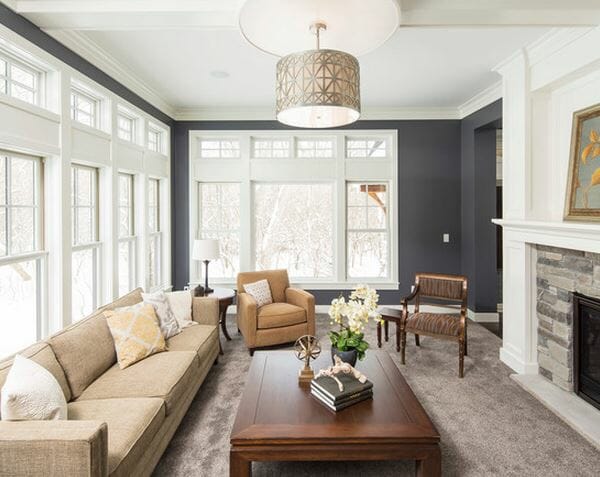
Carpet is also an excellent choice for bedrooms and children’s playrooms. High-traffic areas such as stairs and hallways, meanwhile, might be better suited for a more durable flooring that will not show wear from foot traffic over time. However, carpet does provide increased traction and dampens noise when used on stairs and in hallways. It all comes down to personal choice.
Final Thoughts on Carpet Types
Carpet can make a bold visual statement or be a subtle décor accent. The choice is yours. Light carpet is known for showing stains, but it can be treated with soil and stain repellents to improve its durability and resiliency. Darker carpets, on the other hand, are naturally better at hiding dirt and wear.
As you might imagine, a variety of cuts and styles of carpet can be used to create the feel you want underfoot as you walk through different rooms of your home. Before choosing carpet as your flooring of choice, we recommend exploring the pros and cons of different flooring types.
Other important factors to consider when shopping for new carpet include location, foot traffic, longevity, material durability and abrasion (wear) resistance.
Modernize can help homeowners find licensed flooring contractors in their area to help narrow down your choices and kick off your carpet renovation project.
Compare top-rated flooring pros in your area.
Read real homeowner reviews, explore qualifications, and view promotions. Modernize makes it easy to browse professionals and find one that will be perfect for your project.
